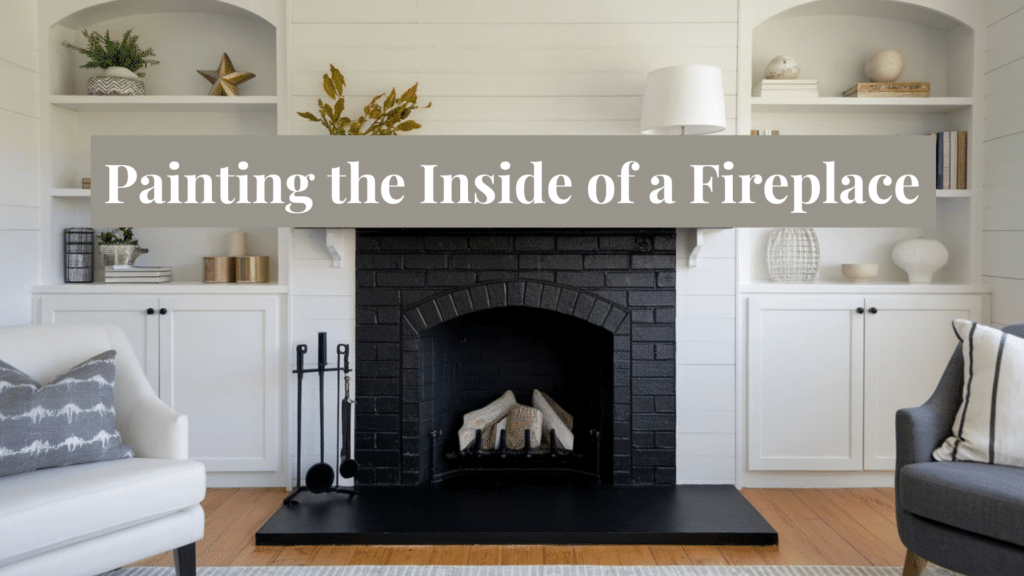Are you thinking about giving your fireplace a fresh new look? You might be wondering if it’s okay to paint the inside of it. The good news is — yes, you can! Painting the inside of a fireplace can make it look cleaner and more modern and even help hide soot stains.
But before you grab a brush and start painting, there are a few important things you should know. Since fireplaces get really hot, you can’t use just any kind of paint. You need special paint that can handle the heat. It’s also important to clean and prepare the surface the right way so the paint sticks well and lasts longer.
In this blog, I’ll explain everything you need to know—from safety tips and paint choices to step-by-step instructions—so you can do it right and keep your fireplace safe.
Can You Paint the Inside of a Fireplace?
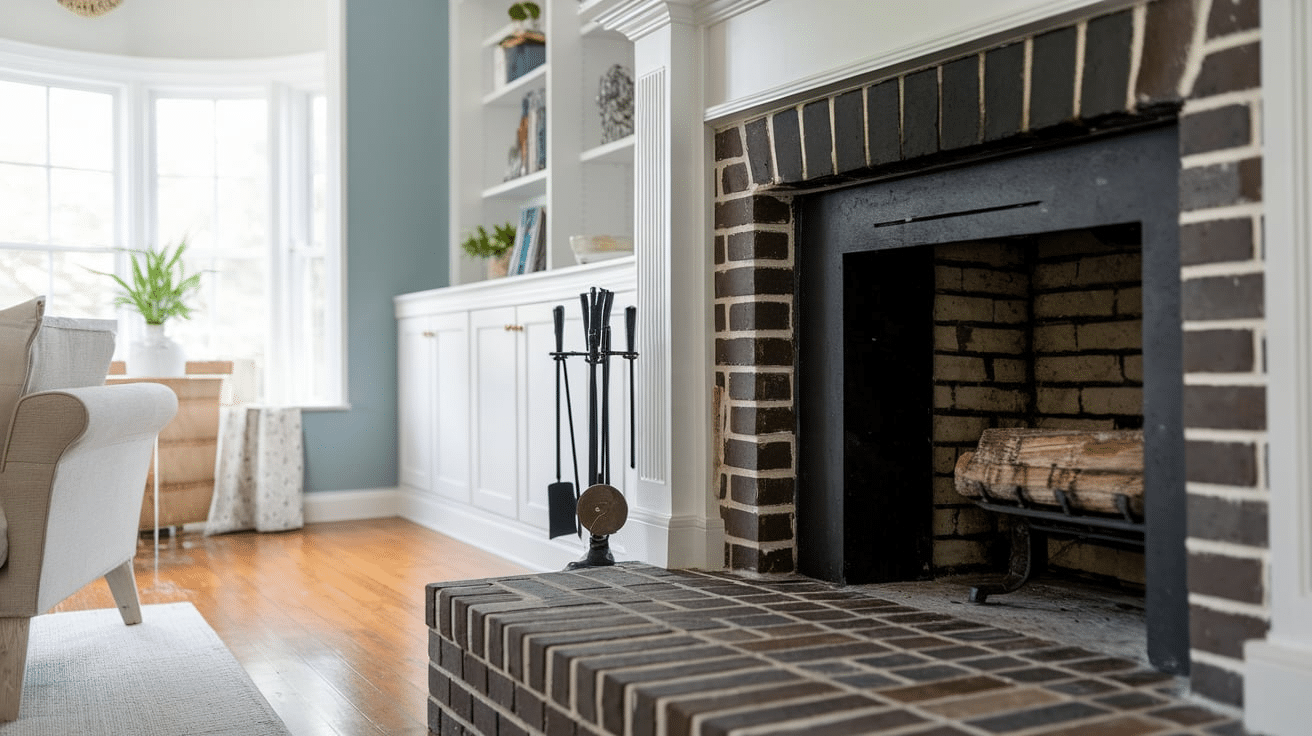
Yes, you can paint the inside of a fireplace — but you have to do it the right way. The inside of a fireplace gets really hot, so regular paint won’t work. It can peel, crack, or even give off bad fumes when it gets too hot. That’s why you need special high-heat paint made just for places like this.
Painting the inside of your fireplace can make it look cleaner and more updated. It’s a simple way to improve the look of your room without spending a lot of money. Just make sure the fireplace is not being used while you work on it, and follow all the steps carefully.
It’s totally okay to paint the inside of your fireplace as long as you use the right paint and take the proper safety steps.
Why Paint the Inside of a Fireplace?
You might be asking, “Why would I paint the inside of my fireplace?” It’s a fair question! Most people don’t think about it, but painting the inside can actually make a big difference.
1. It Makes Your Fireplace Look Cleaner: Over time, the inside of a fireplace gets covered in black soot and stains. Even if you clean it, it can still look dirty or worn out. A fresh coat of paint helps cover those marks and gives it a clean look.
2. It Helps Your Fireplace Match Your Style: If you’ve updated your room or changed your home’s colors, the old, stained firebox might not match anymore. Painting the inside can help it blend in better with your space.
3. It Hides Soot and Burn Marks: Dark high-heat paint, like black or charcoal gray, helps hide future stains. You won’t have to worry about soot showing as much, which means less stress about how it looks after every fire.
4. It’s a Budget-Friendly Upgrade: Instead of replacing parts of your fireplace or hiring someone to do a big makeover, painting is something you can do yourself. It doesn’t cost much, and it can make a big impact.
5. It Adds a Finished Look: A freshly painted fireplace interior looks more polished. Whether the fireplace is on or off, it makes the whole area look tidier and more put together.
Painting the inside of your fireplace may seem like a small change, but it really can make a big difference. It’s a simple project that gives your space a cleaner, more stylish feel — and that’s always a win!
What Kind of Paint Should You Use?
When it comes to painting the inside of your fireplace, you can’t just use any paint. The inside gets really hot, especially if you use it often. That’s why choosing the right kind of paint is super important — both for safety and for how long it lasts.
Use High-Heat Paint Only
The most important thing is to use high-heat or heat-resistant paint. This kind of paint is made to handle really high temperatures — up to 1,200°F or more. Regular wall paint will peel, bubble, or even give off harmful fumes when it gets too hot.
Choose the Right Finish
Most people choose a matte or satin finish for inside the fireplace. These finishes don’t reflect a lot of light and do a good job of hiding soot or ash marks. Avoid glossy finishes, as they show dirt more easily and can look too shiny for this kind of project.
Go with Dark Colors
Dark colors like black, charcoal gray, or dark brown are the most popular. They look sleek and clean — and they hide soot better than light colors. You can use lighter colors like white or cream for a decorative fireplace that’s not used for burning wood or gas, but those will stain quickly if there’s any fire or smoke.
Paint Types to Try
Here are a few types of heat-resistant paint that work well:
- Rust-Oleum High Heat Paint
- Stove Bright High-Temperature Paint
- Krylon High Heat Spray Paint
- Rutland Fireplace Paint
Make sure you’re getting the brush-on kind if you don’t want to use spray paint indoors.
Choosing the right paint makes all the difference. With the right kind, your fireplace will look great, stay safe, and last through many cozy nights.
Gathering Supplies
Before you start painting the inside of your fireplace, you need to make sure you have the right materials. Since fireplaces deal with a lot of heat, not just any paint or tool will work. What you’ll need:
1. High-Heat Paint
2. Paintbrush or Roller
3. Wire Brush or Scraper
4. Fireplace Cleaner or Degreaser
5. Protective Gear
6. Drop Cloth or Old Sheet
Using the right materials makes the whole job easier, safer, and longer-lasting. Don’t skip this step — it really does make a big difference!
Painting the Inside of A Fireplace: Step-by-Step Guide
Ready to paint the inside of your fireplace? Great! Follow these simple steps to do it safely and correctly. Don’t rush—taking your time will help the paint last longer and look better.
1. Make Sure the Fireplace is Cool and Not in Use
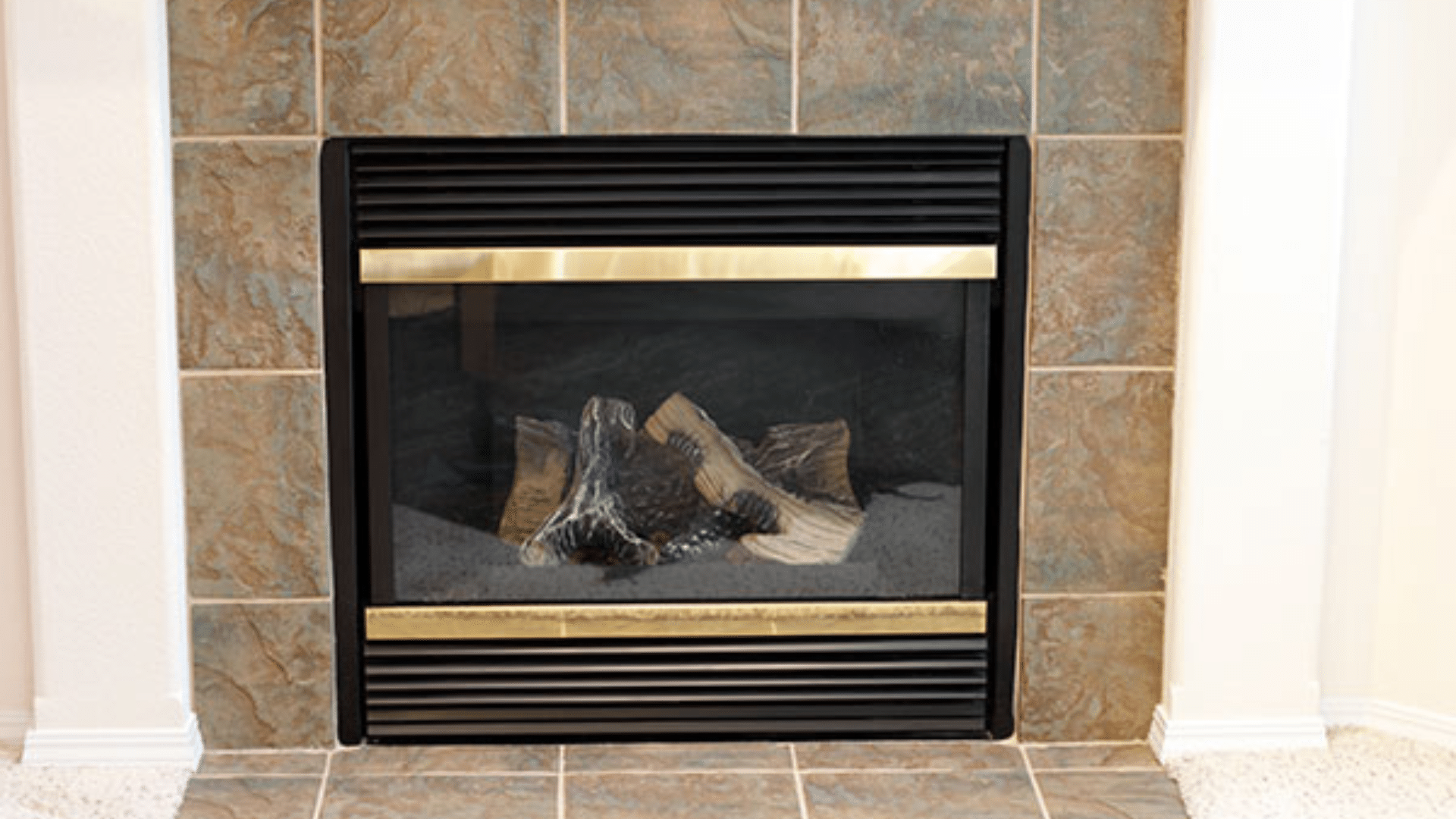
Before anything else, be sure your fireplace is completely cool. Don’t paint if it’s recently been used. Wait at least 48 hours after your last fire to be safe. Even if it feels cool to the touch, there may still be heat trapped inside, so giving it extra time helps keep the project safe.
2. Clean Out the Fireplace
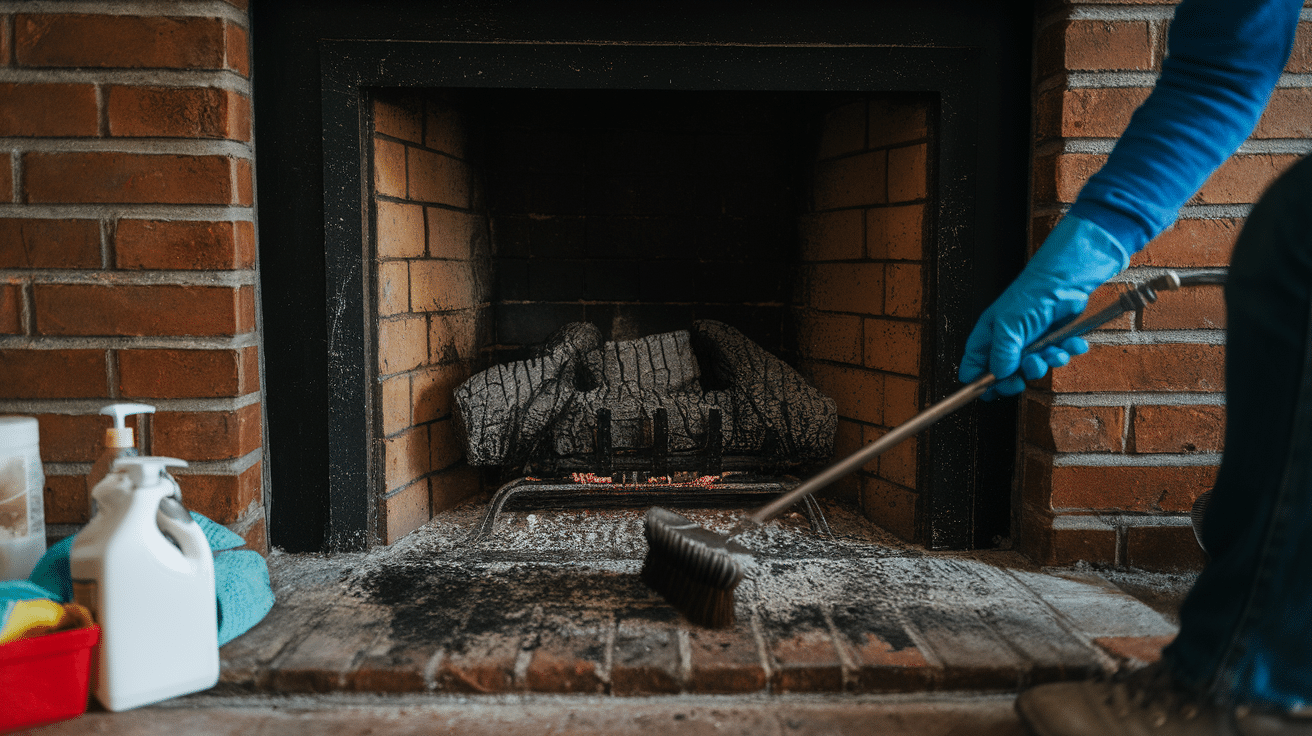
You’ll need a clean surface before you can paint.
- Scoop out any ashes and leftover wood.
- Use a vacuum to suck up dust, dirt, or little bits.
- Scrub the inside walls with a wire brush to remove soot or loose bits.
- Wipe it down with a cloth and a fireplace-safe cleaner or a mix of soap and warm water.
- Let it dry completely before you paint.
3. Protect Your Space
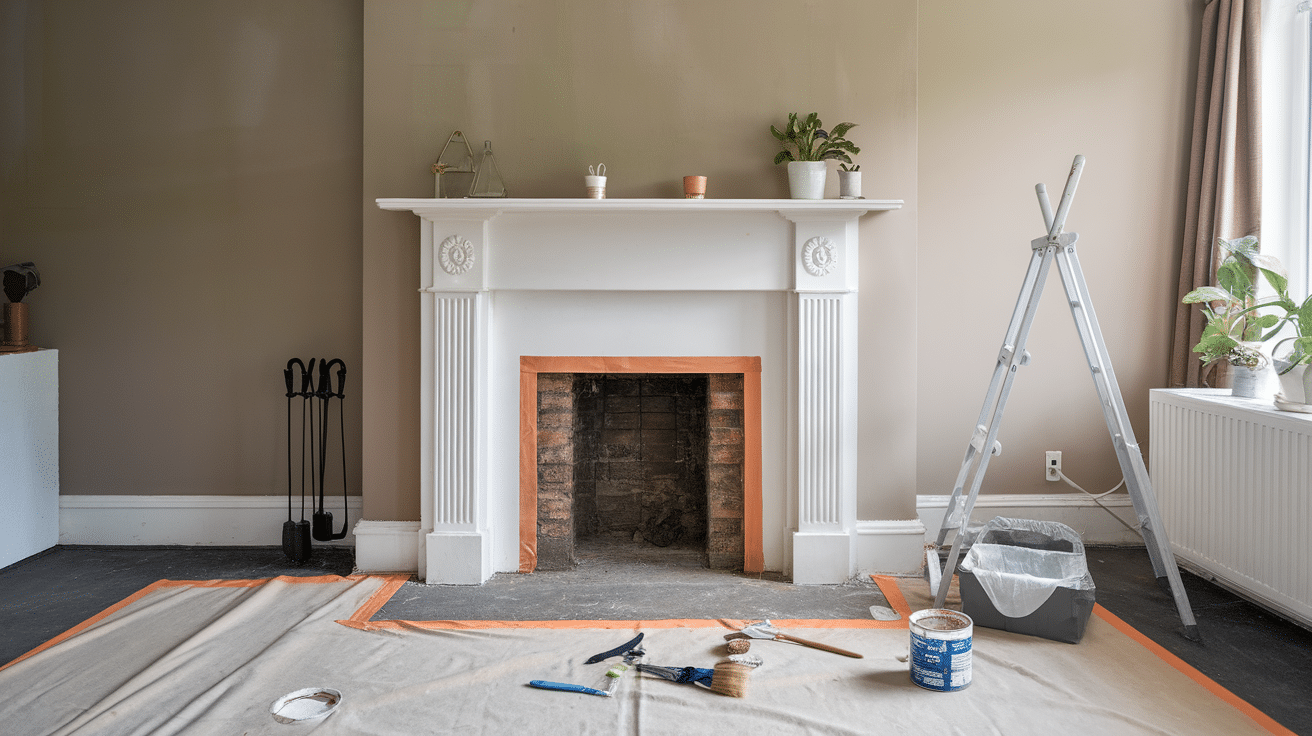
Painting can get messy, especially with soot and dust involved.
- Lay down a drop cloth or old sheet in front of the fireplace to catch drips.
- Tape off any areas you don’t want to get paint on—like the fireplace frame or the floor around it.
4. Wear Your Safety Gear
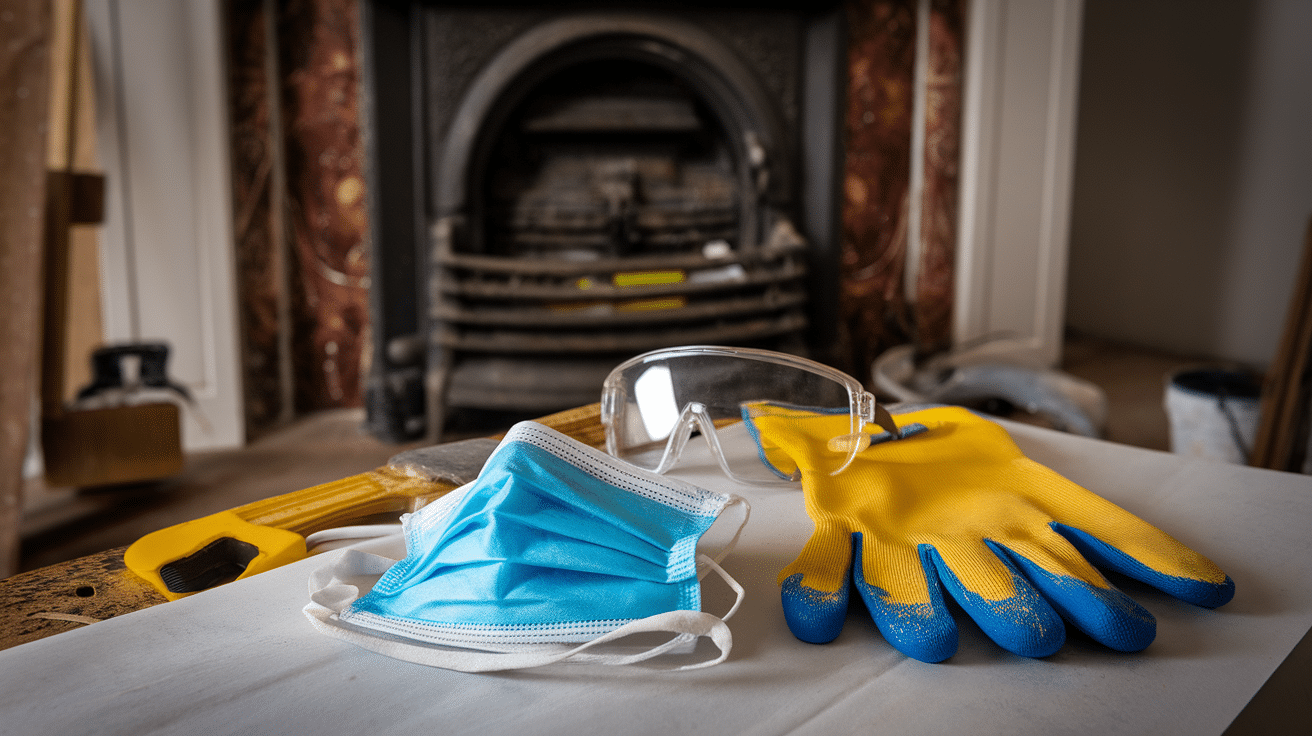
Even if it seems like a simple job, it’s smart to wear:
- Gloves to protect your hands
- A face mask to avoid breathing in soot or fumes
- Safety glasses to keep dust and paint out of your eyes
5. Start Painting
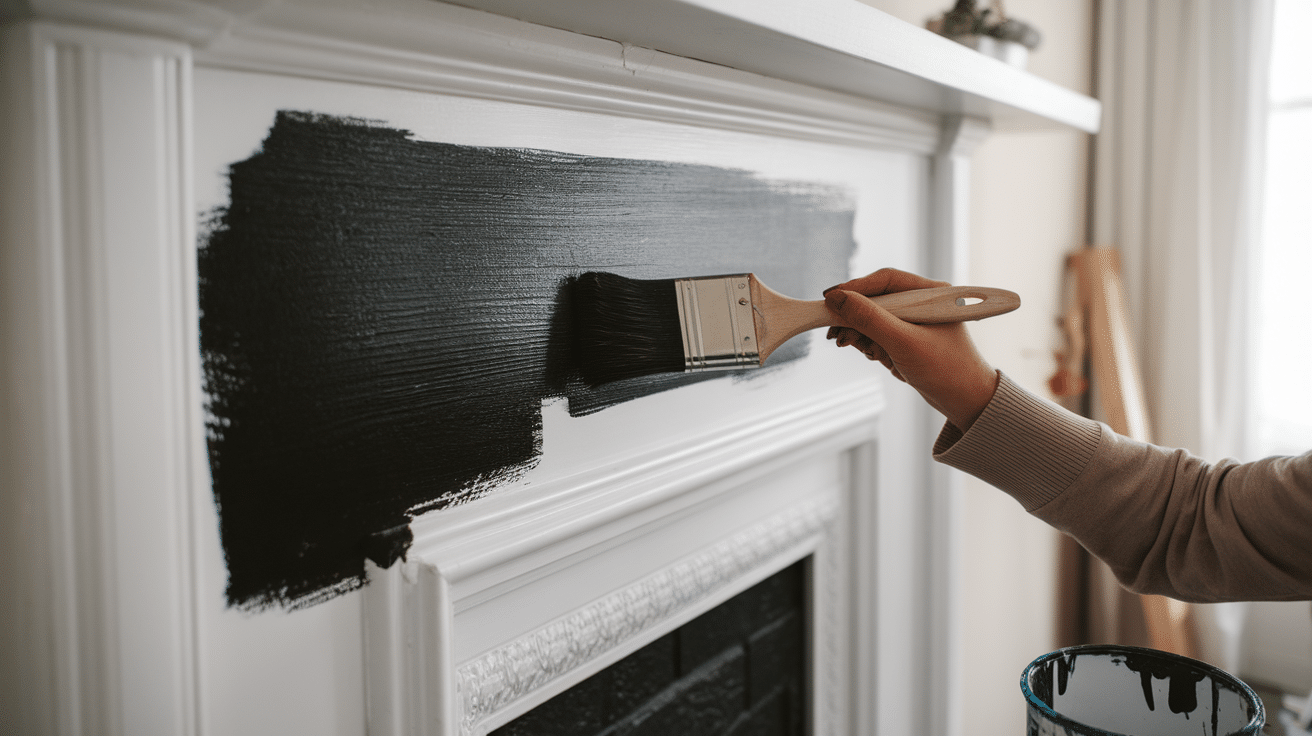
- Open a window for ventilation.
- Stir your paint well before using it.
- Start at the top and work your way down to avoid drips.
- Use even strokes, and don’t overload your brush with paint.
- Apply a thin first coat and let it dry fully before adding a second coat.
6. Let It Dry and Cure
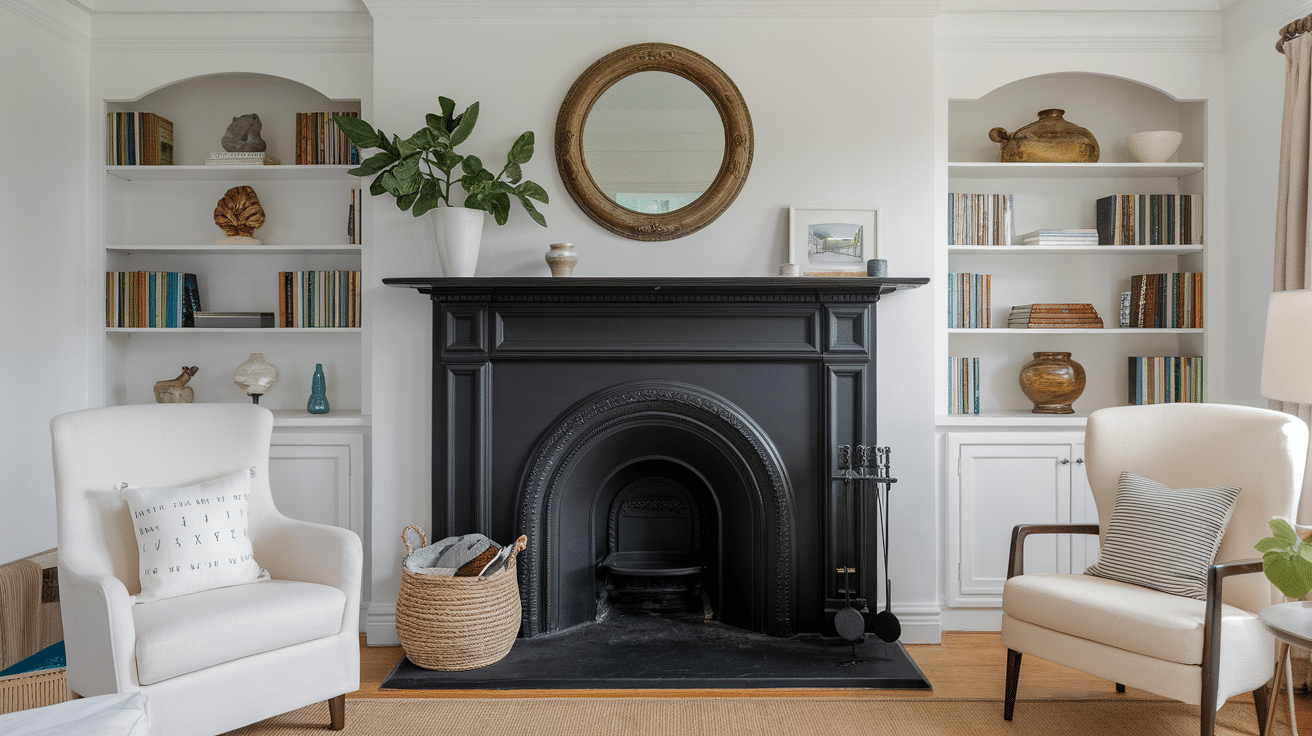
After you’re done painting:
- Let the fireplace sit and dry for at least 24 hours (check your paint can for exact drying time).
- Wait at least 72 hours before lighting a fire. This gives the paint time to “cure,” or fully set, so it can handle the heat.
Painting the inside of a fireplace is a simple weekend project that can make a big difference in how your fireplace looks. Just be sure to use the right materials and follow each step carefully. You’ll end up with a clean, updated fireplace you can enjoy all season long!
Fireplace Painting Inspo: Fun Ideas to Get You Started
Painting the inside of your fireplace is a great way to freshen up your space — but what color should you use? What kind of look are you going for? Whether your style is cozy, modern, rustic, or bold, there’s a paint idea that can help your fireplace stand out or blend in perfectly.
1. Classic Black
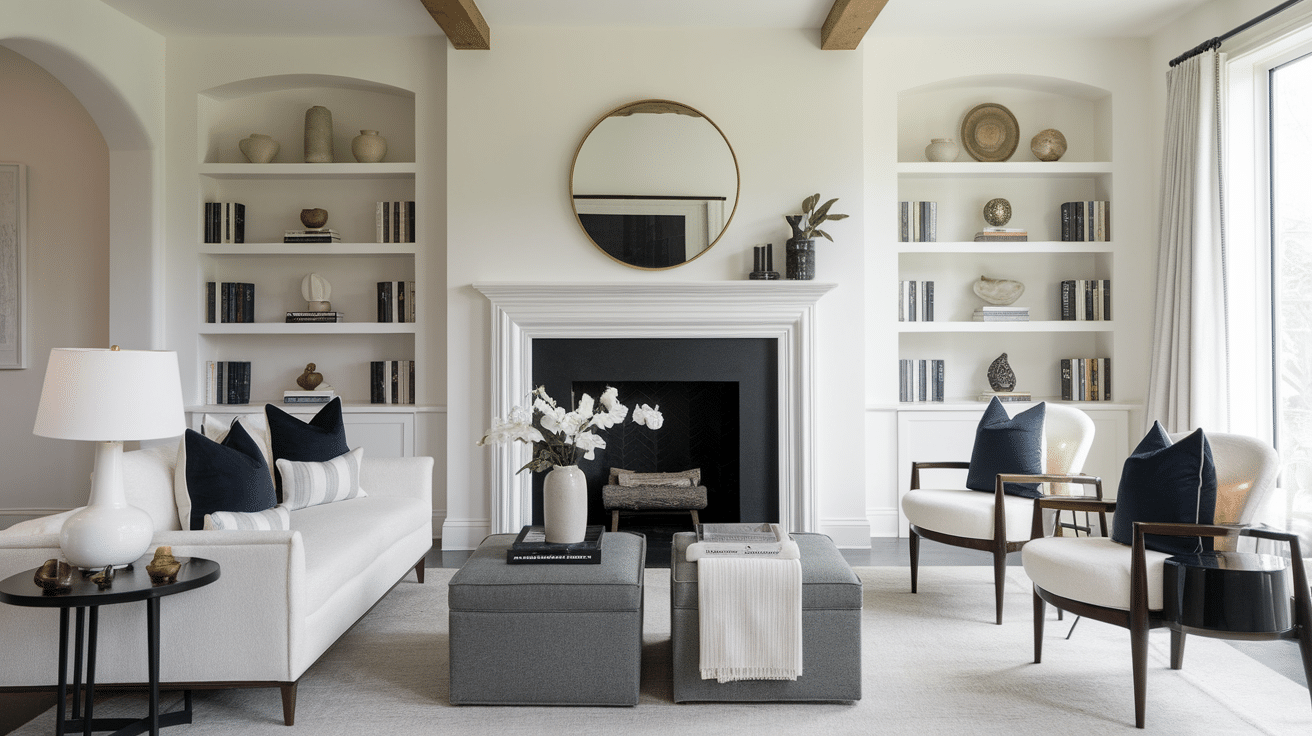
If you want something simple and sharp, black is the way to go. It hides soot and burn marks really well and gives your fireplace a clean, finished look. Black works with just about any wall color or furniture style, so it’s a safe and stylish choice.
Great for: modern, farmhouse, or traditional homes
Bonus: It makes the flames pop when the fire is lit!
2. Charcoal Gray
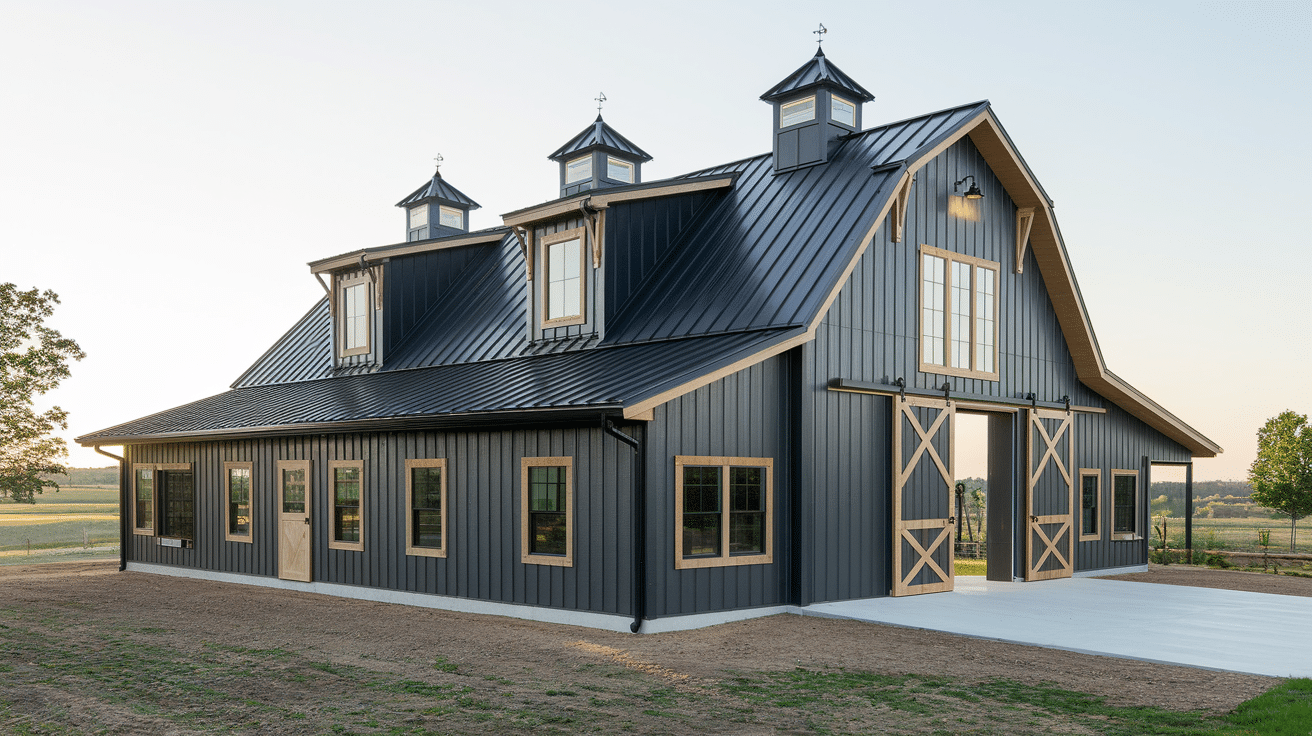
Charcoal gray is a great middle-ground if black feels too bold. It’s still dark enough to hide soot, but it’s a little softer and more modern. It pairs really nicely with light-colored bricks or stone.
Great for: minimalist or cozy styles
Tip: Add a matching gray throw blanket or pillow nearby to tie the look together.
3. White or Off-White
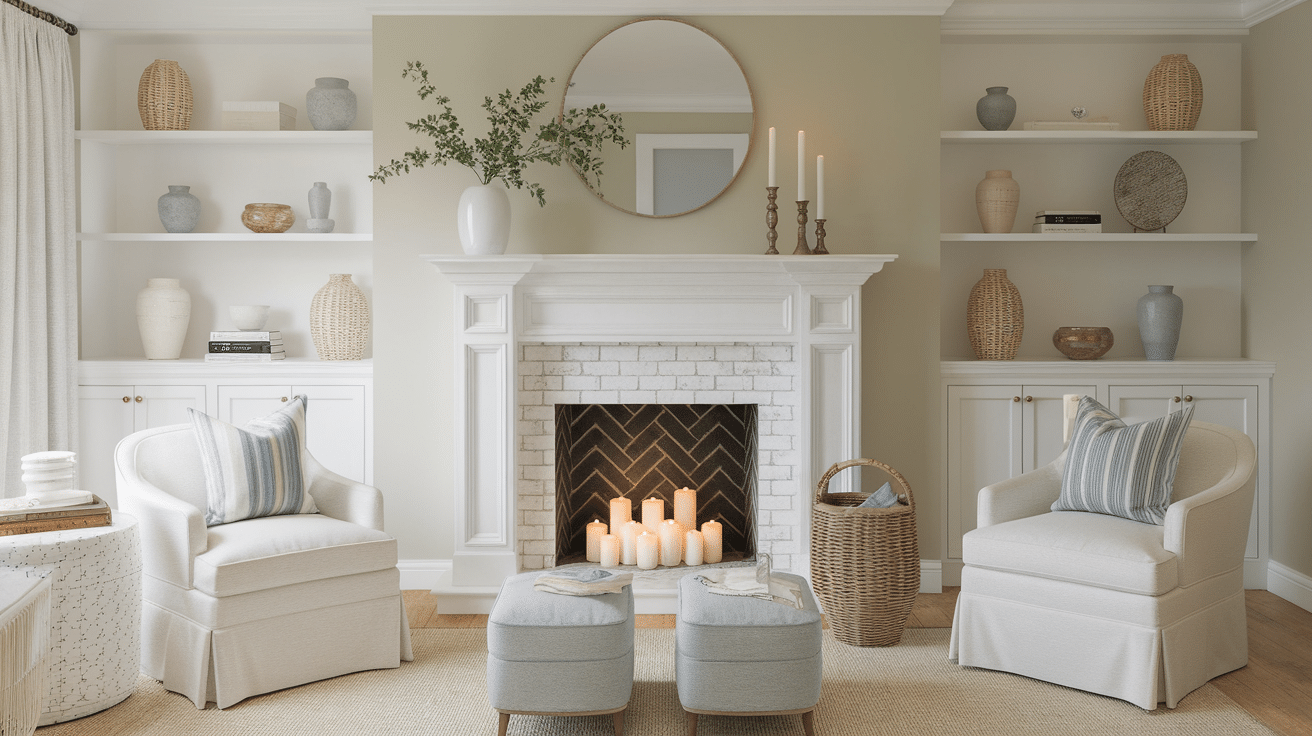
Painting the inside of a non-working fireplace white can give your space a fresh, clean feel. Just make sure you don’t use white inside a working fireplace — it will get stained fast. This look is best for decorative fireplaces or ones that don’t get used often.
Great for: coastal, cottage, or shabby chic styles
Tip: Add candles or string lights inside for a warm, cozy glow.
4. Brick Red or Rustic Brown
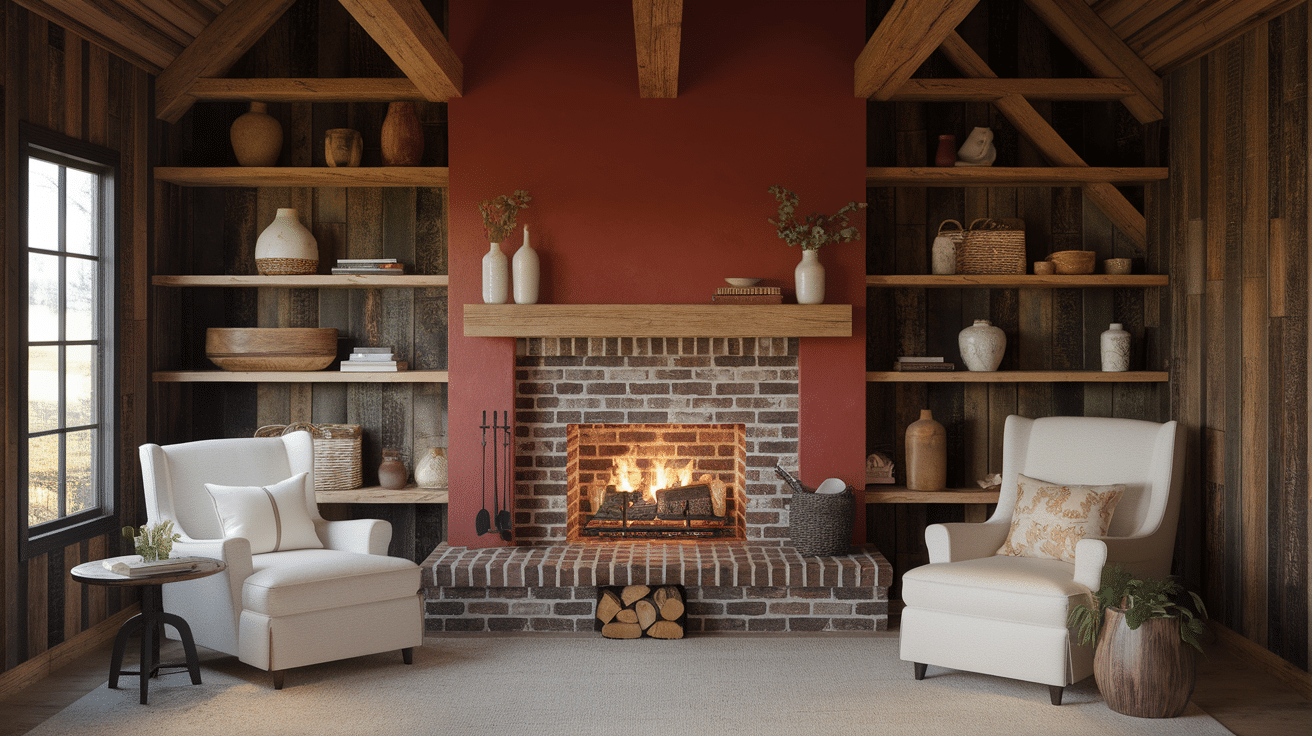
Want to keep that classic, homey vibe? Go for a brick red or a warm brown. These colors make your fireplace feel cozy and natural — like a cabin or farmhouse. They also hide dirt and soot pretty well.
Great for: rustic or country-style homes
Idea: Pair it with wood beams or vintage decor for that extra charm.
5. Bold Colors
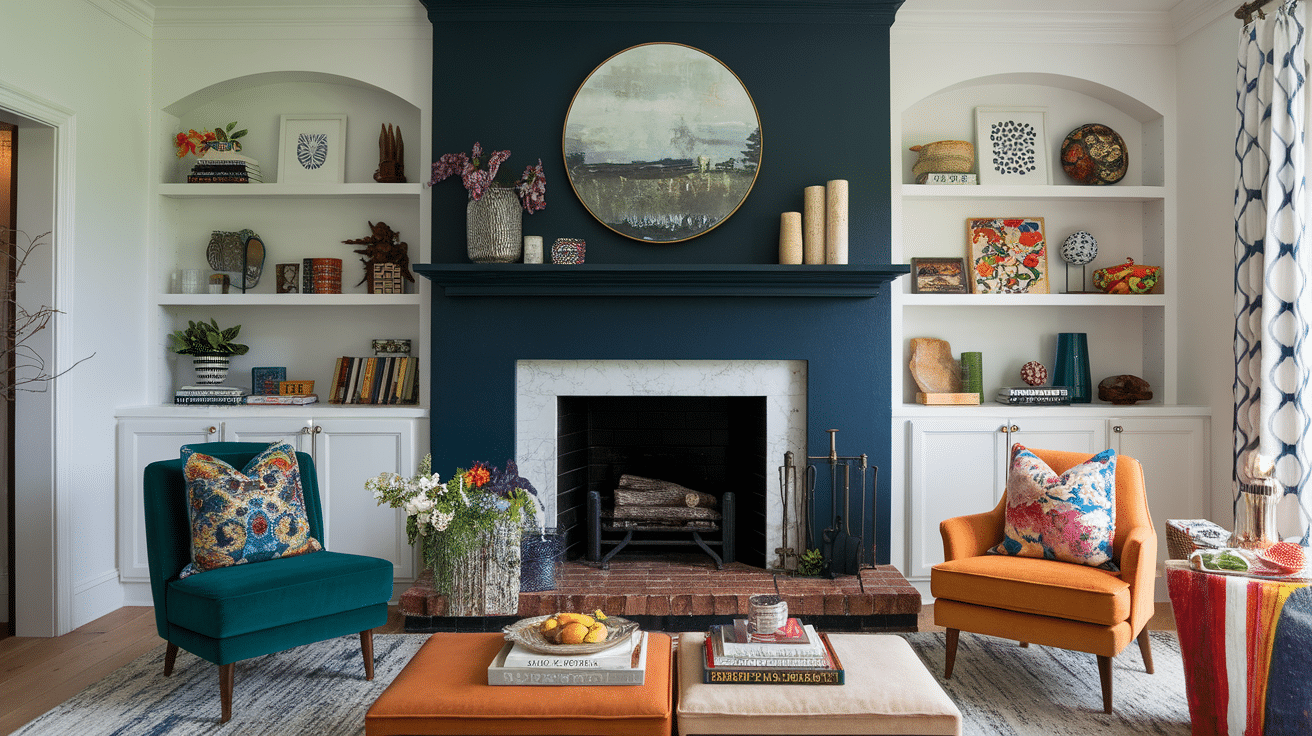
Feeling creative? Try a bold color like navy blue, forest green, or even deep burgundy. These rich colors can make your fireplace the main focus of the room. Just remember — darker colors work better inside a working fireplace to hide marks.
Great for: bold, creative, or eclectic styles
Tip: Pick a color that ties in with a rug, art, or pillows in the room.
6. Two-Tone or Contrast Ideas
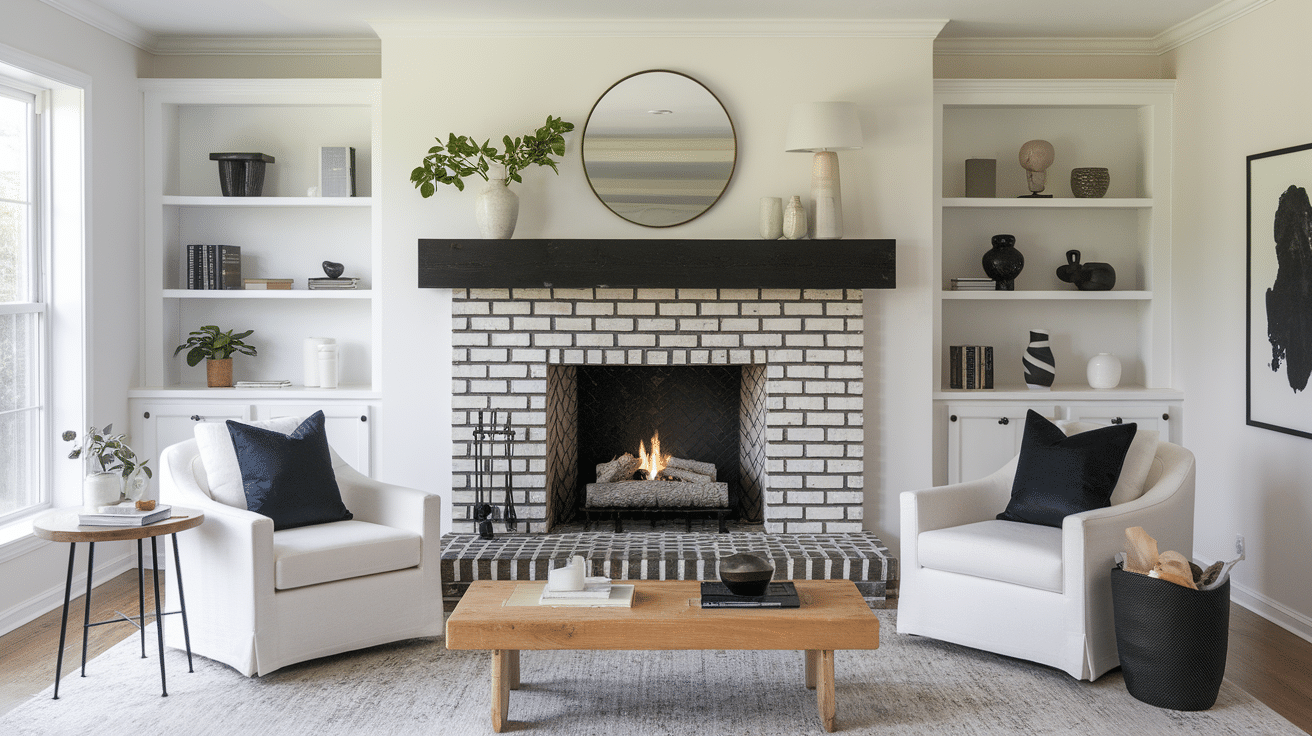
You don’t have to paint the whole thing one color! Try painting the inside a dark shade and the outer bricks a lighter one — or vice versa. This adds contrast and makes the fireplace pop even more.
Fun combo ideas:
- Black inside + white outside
- Gray inside + tan bricks
- Navy inside + soft beige mantle
7. Decorative Use for Non-Working Fireplaces
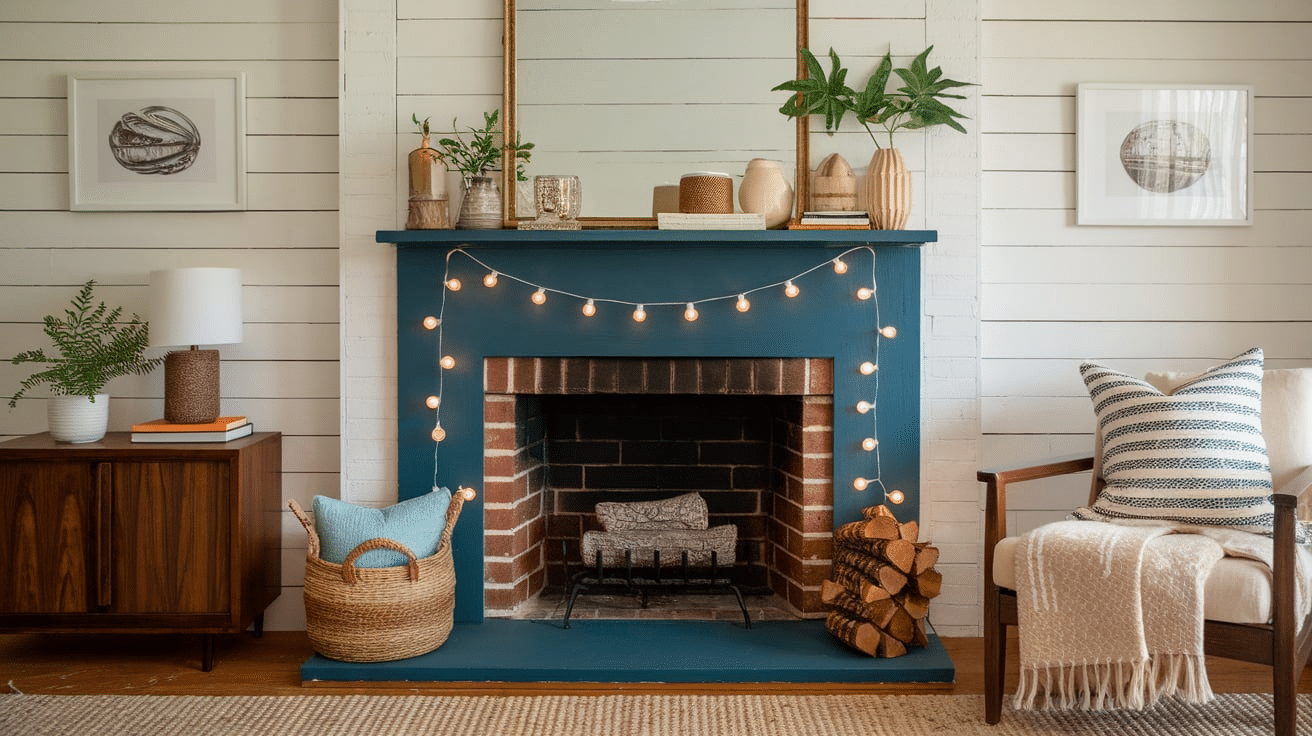
If your fireplace doesn’t work, you can really have fun with the inside! Once it’s painted, you can fill it with:
- Fairy lights or lanterns
- A stack of candles
- Books, plants, or seasonal decor
This turns your fireplace into a cool design piece, even without the flames.
No matter what style you choose, painting the inside of your fireplace is a simple way to bring fresh life to your space. Don’t be afraid to try something new — it’s just paint, and you can always change it later. Go with what makes your home feel like you!
Fireplace Paint: Dos and Don’ts
Before you start painting the inside of your fireplace, there are a few important things to keep in mind. Doing it the right way makes the paint last longer and keeps your fireplace safe.
1. Use High-Heat Paint: Only use paint that’s made to handle very high temperatures — usually up to 1,000°F or more. This is super important for safety. Regular paint can melt, peel, or give off dangerous fumes when the fire gets hot.
2. Clean the Fireplace First: Always clean out ash, soot, and dust before you paint. A clean surface helps the paint stick better and last longer. Use a wire brush and a cleaner that’s safe for fireplaces.
3. Work in a Ventilated Space: Open a window or door while painting so fresh air can come in. High-heat paint can have strong smells while it dries.
4. Don’t Skip Safety Gear: Always wear gloves, a face mask, and safety glasses. Cleaning and painting can stir up dust and strong smells. Protecting yourself makes the job easier and safer.
5. Don’t Rush the Job: Take your time. Don’t slap on a thick layer of paint. Thin, even coats look better and dry faster. Rushing can lead to drips, bubbles, or peeling later.
Following these simple dos and don’ts will help you get great results and keep your fireplace safe to use. A little prep goes a long way!
Conclusion
Painting the inside of your fireplace is a simple way to give it a fresh, clean look. Whether you want to cover up old soot stains or just match your room’s style, the right paint can make a big difference.
Just remember — it’s very important to use high-heat paint and follow all the right steps. Clean the surface well, take your time while painting, and let it dry completely before using the fireplace again.
This is a project you can do on a weekend, and it doesn’t cost a lot. Plus, it can really help make your fireplace look brand new. Whether you go with classic black, soft gray, or a bold pop of color, your fireplace can become a stylish and unique part of your home.
Frequently Asked Questions
Can I use spray paint inside a fireplace?
Yes, but only if it’s high-heat spray paint. Make sure the space is well-ventilated. Spray paint can be messy indoors, so brush-on paint is often easier.
Can I paint a gas fireplace?
Yes, but make sure you only paint areas that don’t touch direct flame. Use high-heat paint and check your fireplace manual, or ask a pro.
How long does fireplace paint last?
If applied correctly, fireplace paint can last for years. Using the right paint and keeping the fireplace clean helps it stay looking good longer.
Can I paint the firebox (where the fire burns)?
Yes, but only with high-heat paint made for fireboxes. Make sure the paint is rated for up to 1,200°F or more to stay safe.


